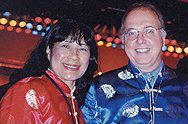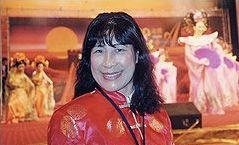Whether you accept it, avoid it or live somewhere in between, insurance coverage has become a defining issue for our profession. Patients increasingly expect to use their benefits, practitioners want to be compensated fairly for their time and expertise, and the system itself remains – at best – fragmented. The encouraging news is that coverage has expanded in meaningful ways. The challenging news is that reimbursement, across the board, remains inadequate.
When East Meets West at the Doctor's Office
The Second World Congress of Integrative Medicine took place at the Beijing International Convention Center in Beijing, China September 21-24. More than 1,300 health care practitioners, including medical doctors, acupuncture and Oriental medicine physicians from 27 countries attended the event. They came to the conference for one common goal - to exchange knowledge and information from each other for the combination of Western medicine with traditional Chinese medicine, which is also known as "integrative medicine." The Congress was comprised of six sessions: clinical research and observation in integrative medicine; studies on the basic theories of integrative medicine; methodology, education, policy and administration; drug research and development; experimental studies; and theoretical studies. In addition to the sessions, there were also satellite meetings on detoxification with traditional Chinese medicine; treating burns; osteoporosis; ready-to-use Chinese drugs; and the application of compound and coronary salvia remedies.

The Chinese government placed a high emphasis on the importance of this event. The leaders of the Standing Committee of the National People's Congress; the Central People's Government (State Council); the minister of China's National Ministry of Public Health; and the National Administration of Chinese Medicine, attended the event.
Approximately 25 acupuncturists and traditional Chinese medicine doctors from the U.S. attended the Congress, including Dr. Angelique Murphy, a pediatrician and integrative medical doctor, and a colleague from the Alabama Association of Oriental Medicine.
Several topics were presented by the U.S. doctors at the Congress. Topics included:
- James Gordon: "The Future of Integrative Medicine in the United States";
- Shaw T. Chen, Food and Drug Administration: "Developing Chinese Herbal Medicines as New Drugs: U.S. Regulatory Perspectives";
- David M. Eisenberg, Harvard Medical School, Harvard University: "Complementary, Alternative and Integrative Medicine in the United States: Current Trend and Future Opportunities";
- Ka-kit Hui, UCLA School of Medicine: "Education to Promote Global Development of Integrative Medicine for Positive Health System Transformation";
- Xiao-ming Tian: "Preliminary Evaluation of the Pharmacological Effects and Mechanisms of Action of OAOK - A Newly Developed Chinese Herbal Medicine for Treating Osteoarthritis."
I represented the U.S. participants as the group's vice-chair. As a former medical doctor and acupuncture physician for China's Olympic athletes for 20 years, I was proud to serve the group. I now run an acupuncture academy in Alabama, teaching students and treating patients. At the Congress, I delivered a presentation, "Toward Acupuncture Methods Applied for Sports Injury Treatment," demonstrating new techniques and variations on old acupuncture methods based on 2,000 case studies. The method provides faster pain relief for soft tissue injuries, especially for athletes in the field during sports competitions, and it allows injured athletes to go back on the field as soon as possible when necessary. After the event, I was invited to Beijing University to give a lecture and demonstration.

Other presentations were well received. Dr. Guo-fen Chen from New York presented "Infertility Treatment by TCM," which obtained a good response from the audience. Dr. Ming-qing Zhu of California gave a presentation on scalp acupuncture that also gained acclaim. Three in-hospital stroke patients came to the event and were treated by Dr. Zhu at the scene. After the event, Dr. Zhu was invited to Suzhou in southern China for a scalp acupuncture demonstration.
Dr. Chen Ke-ji, an academician with the Chinese Academy of Sciences and the president of Chinese Association of Integrative Medicine, spoke in the opening ceremony. He said that the aim of the Congress was to promote global integrate medicine and human health, and to develop a combination of the traditional Chinese medicine, complementary and alternative medicine, and modern medicine. Chen Ken, an official with the World Health Organization, and the aforementioned James Gordon, chairman of the White House Commission of Complementary and Alternative Medicine policy and a professor at Georgetown University, also made ebullient speeches at the opening ceremony.
The First International Congress of Integrative Medicine was held five years ago, also in Beijing. Since then, integrative medicine has developed very fast in the rest of the world. More physicians have recognized that a combination of Western (modern) medicine and traditional Chinese medicine (e.g. acupuncture) gets better results than a single method. This is especially true for the treatment of difficult diseases. Integrated medicine gets better results than only modern medical methods.
The Chinese have developed many kinds of integrative medicine to treat cancer; AIDS; stroke; heart disease; and diabetes, as well as skin diseases, etc. Many presentations from the Integrative Medicine Congress included new scientific research reports; other reports gave new life to the traditional herbal formulae.
Several kinds of integrative medicine products have been used to treat patients. In the integrative medicine exhibition, which was part of the conference, most of the products combined Chinese herbal medicines with some Western medicines in the form of pills or injections for treating all kinds of diseases; fighting against aging; and keeping people healthy.
Different combinations of integrative medicine were showcased at the meeting. For example, doctors in the U.S. usually use surgery to treat herniated lumbar discs, but there were many reports showing that an integrative medicine approach, including acupuncture, acupressure, tuina, and acupoint injection of some Chinese herbal medicines, got better results for patients than surgery. They recovered faster without taking any surgical risks.
In another example presented at the Congress, in this instance, for treating ischemic stroke, the efficacy of a traditional Chinese herbal medicine formula, Buyang Huanwu (Tang) Decoction (BYHWD), was proved by the School of Pharmacology Sciences at Beijing University. Cai Xiao-qing and 10 other Chinese scientists adopted modern science and technology to study the scientific meaning of this form of traditional Chinese medicine (TCM). Their research indicated that the medicated serums of BYHWD antagonized noradrenaline, which contracted blood vessels, protected cerebral cells from becoming oxygen-deficient and maintained the fluidity of cerebral membrane. Pharmacological studies showed that one of BYHWD's motive mechanisms of BYHWD was developed by the way of multicompositions acting on multitargets. It showed that prescriptions of TCM produced macroeffects through molecular microeffects, providing a potent launch point for further study.
Japanese physicians also presented several studies. Research on one herbal medicine formula, Xiao Cha Hu Tang, in combination with other herbs, demonstrated very good results as a complementary treatment for chronic hepatitis C.
The Second World Congress of Integrative Medicine was an unmitigated success. A few years ago, integrative medicine didn't seem possible, but East is now meeting West at the doctor's office, and the change is turning the business of healing on its head.


